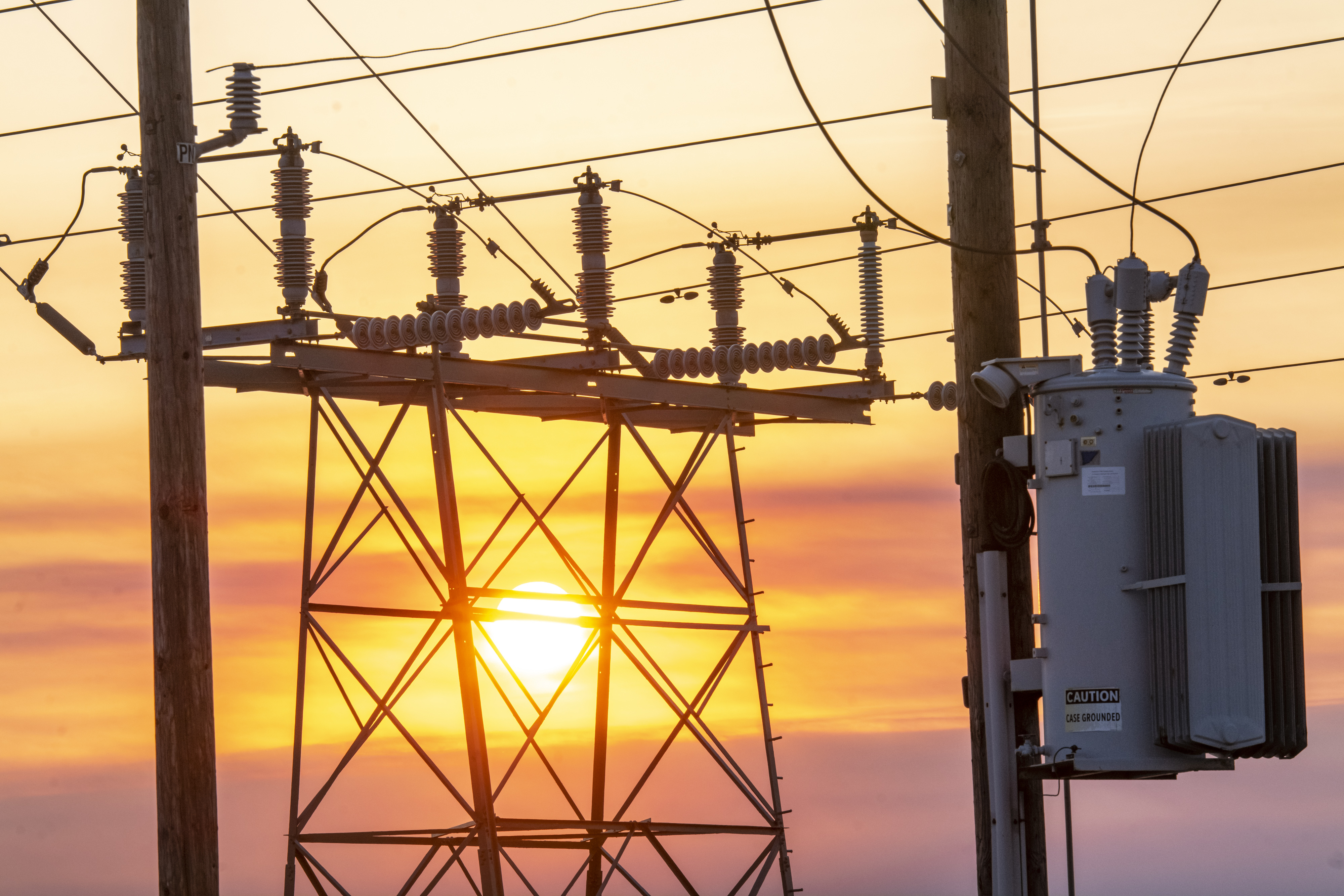The chance of power outages will increase Monday when California enters the sixth day of an unrelenting heat wave.
Energy demand is expected to outpace supply starting Monday evening, and predictions for Tuesday show the state rivaling its all-time high for electricity demand, said Elliot Mainzer, president and chief executive officer of the California Independent System Operator. The ISO issued a Stage 1 energy emergency alert Monday afternoon, marking another step toward possible rotating power outages.
“The ISO is working with state agencies and market participants to bring all available energy resources online for what are expected to be the most challenging days of the heat wave,'' Cal-ISO said in a statement.
Get top local stories in Southern California delivered to you every morning. Sign up for NBC LA's News Headlines newsletter.
The system operator is in charge of managing and maintaining reliability on the electric grid. In order to do so, Cal ISO has so far relied on Flex Alerts — voluntary requests to reduce power use during peak periods — during the recent stretch of extreme heat.
Grid managers have several options available before power outages, like tapping backup generators, buying more power from other states and using so-called demand response programs, where people are paid to use less energy. But keeping the lights on will also require Californians to continue conserving as they have been, even as temperatures rise.
Most of California’s 39 million people are facing extremely hot weather. Temperatures in the Central Valley are expected to be as high as 115 degrees. In Los Angeles, temperatures topped 100 degrees over the weekend and sent Southern Californians to the region's beaches in search of some relief.
“We’re looking at excessive heat warnings through about Wednesday,” said NBC4 forecaster Shanna Mendiola.
Thunderstorms are possible in Southern California’s mountains and deserts.
Energy officials and power companies have been urging people since Wednesday to use less power from 4 p.m. to 9 p.m. by keeping air conditioners at 78 degrees or higher and avoiding using major appliances like ovens and dishwashers.
Another Flex Alert was issued for Monday from 4 p.m. to 10 p.m. when widespread triple-digit heat is in the forecast for Southern California.
“The extra hour of reduced energy use is needed tomorrow because of projected market deficiencies through 10 p.m.,” Cal ISO said in its statement.
On Saturday night, the state used about 44,000 megawatts of electricity, Mainzer said. By Tuesday, that's supposed to ramp up to more than 50,000 megawatts, nearing record levels of energy use set in 2006. But the state would rather curb demand to avoid that number than test the power grid's capability to respond.
“Our goal is to make sure that we do not reach that number," Mainzer said.
During the day, California's energy grid runs on a mix of mostly solar and natural gas, as well as some imports of power from other states. But solar power begins to fall off during the late afternoon and into the evening, which is the hottest time of day in some parts of the state.
Meanwhile, some of the aging natural gas plants that California relies on for backup power aren't as reliable in hot weather. As of Sunday afternoon, three of the state's coastal power plants were experiencing partial outages, though they make up just a small fraction of the state's supply, officials said.
At the same time, some hydropower resources are limited due to drought. Dry conditions and heat are hitting California as the state heads into what traditionally is the worst of the fire season, with large fires already burning and turning deadly. Scientists say climate change has made the West warmer and drier over the last three decades and will continue to make weather more extreme and wildfires more frequent and destructive.
Several hundred thousand Californians lost power in rolling blackouts in August 2020 amid hot weather. The state avoided a similar scenario last summer. Newsom on Friday signed legislation potentially allowing the state's last remaining nuclear plant to stay open beyond its planned 2025 closure in order to ensure more power for the energy grid.
On Sunday evening, nuclear power accounted for about 5% of California's energy supply.



